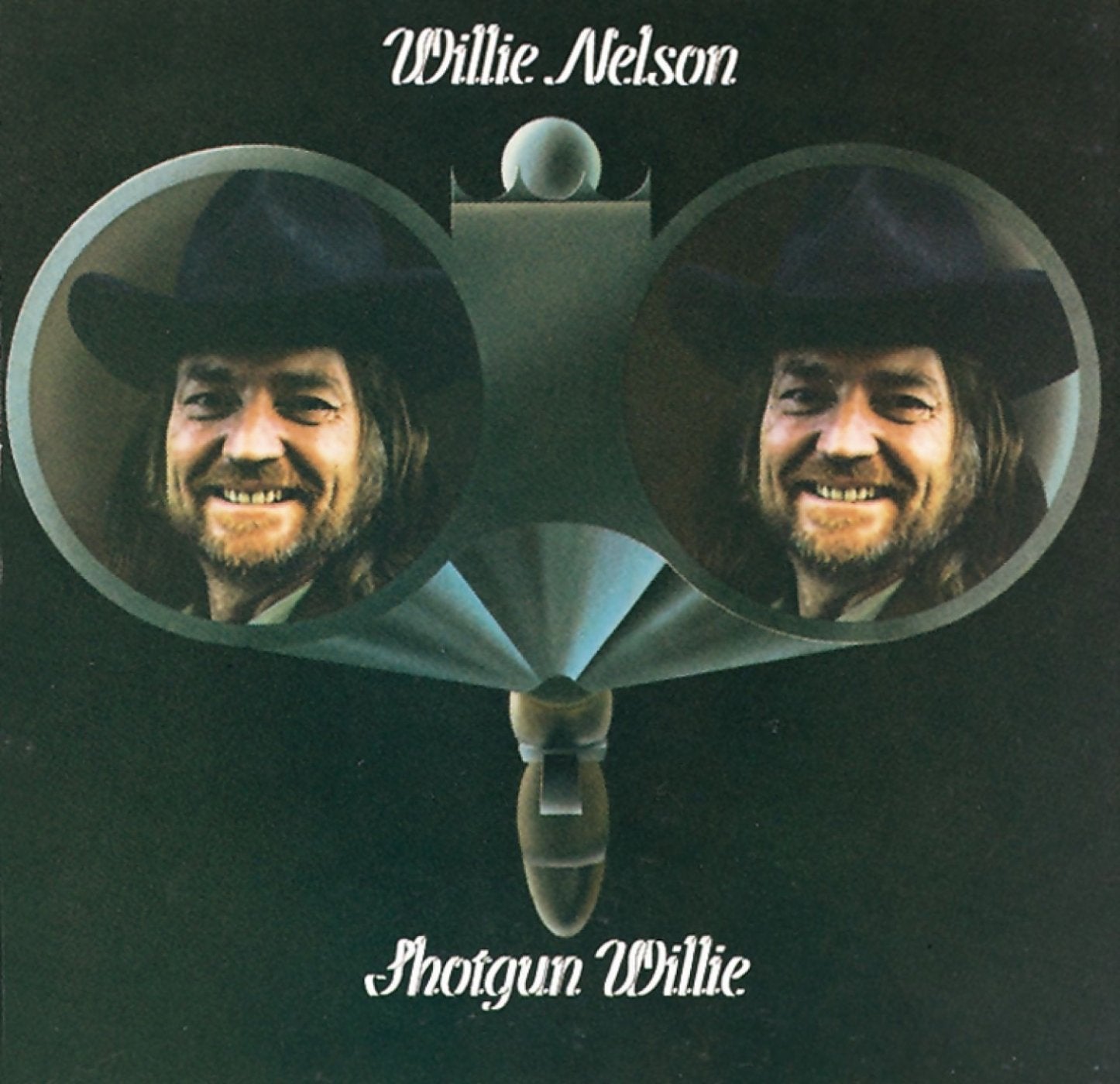ウィリー・ネルソンは非常に長い間活動してきたため、実質的にカントリー音楽の中での長い話に変容しています。残念ながら、それはしばしば彼が全体の脱税問題やナッシュビルの大麻を吸うおじいちゃんとしての真実の地位のために、パンチラインに還元されてしまうことを意味します。
しかし、ネルソンは音楽の生きる伝説の一人でもあります。ほとんどの人は、「Always on My Mind」から「On the Road Again」まで、カントリー音楽の最も認識されるスタンダードのいくつかに変えた曲で彼を知っています。彼が音楽業界の中で最も多作なアルバムメーカーの一人であることは知られていないかもしれません。今年の彼の最新LP、God’s Problem Childは、彼にとって61枚目のスタジオアルバムです。彼の最初のアルバム、1962年の…And Then I Wroteは、今月55周年を迎えます。
多くの人々はまた、ネルソンが多才なコラボレーターであることに気づいていないかもしれません。確かに、ネルソンのように長く明るく輝いてきた少数のスターたちが、彼のコラボレーションの意欲を示しています。一回限りのゲスト出演(昨年、ケイシー・マスグレイヴスのクリスマスアルバムに参加しました)や、本格的なコラボレーションアルバム(ジョニー・キャッシュ、マーレ・ハガード、ウェイロン・ジェニングスなどとのレコードを含む)を通じて、ネルソンの最近のアルバムの多くは、スタジオでシャーリー・クロウからスヌープ・ドッグに至るまで、さまざまなデュエットパートナーを招待する機会となっています。
彼が5年半のキャリアを持ち、文字通り数十枚のアルバムを収めている84歳のウィリー・ネルソンは、1週間、1か月、さらには1年で理解できるアーティストではありません。しかし、カントリー音楽の先駆者の一人のカタログを探索したいのであれば、これらの10枚のアルバムが出発点として良い場所です。

言葉はその絵には合わない (1972)
ウィリーの録音キャリアの最初の11年間、1961年から1972年にかけては非常に prolific で、少なくとも15枚のアルバムがリリースされました。その多くは RCA レコードによってリリースされ、最初の2枚の LP の成功を受けてネルソンを獲得しました。ネルソンの RCA 年間は小さな成功に恵まれ、彼はグランド・オール・オプリに参加し、いくつかのミドル・チャート・ヒットを記録しましたが、スーパースターへの急上昇を示すものではありませんでした。中途半端な成功に失望していたネルソンは、実際に1971年に音楽から引退しましたが、翌年には RCA に対してさらに2枚のアルバムをリリースするために復帰しました。この復帰は重要であり、1973年はネルソンのキャリアの中で最も重要な年の1つとなりました。彼は新しいレーベルと契約し、画期的な LP をリリースし、現在でも彼のレコードやツアーに参加しているバックバンドを結成しました。しかし、1972年は嵐の前の静けさであり、その年にリリースされたアルバム、特に最初のアルバム 言葉はその絵には合わない は、ネルソンがTHE ウィリー・ネルソンになる前の瞬間を示した興味深い作品です。“Will You Remember?” は特に驚くべき曲で、この曲を録音した男性が実際には音楽を完全に諦めかけていたことを知ると、一層心を打つものとなります。彼が諦めなくて本当に良かったと言っています。

ショットガン・ウィリー (1973)
RCA との確執の後、ネルソンはアトランティック・レコードの影響力のある副社長で、リズム・アンド・ブルースという言葉を生み出したジェリー・ウェクスラーに出会いました。ウェクスラーはネルソンのキャリアにおいて短いが重要な役割を果たし、アトランティックの初のカントリーアーティストとして彼を契約しました。結果として、このアルバムはネルソンの以前の純粋なカントリー・レコードよりもかなり活気のあるサウンドになりました。タイトル曲はホーンのアレンジであふれ、"Whiskey River" はネルソンがこれまでに録音した中で最も感染力のある曲際立ったブルージーな宝石です。このアルバムのダイナミックなサウンドは、クラシックカントリー、ロカビリー、ジャズ、R&Bを組み合わせており、当時ナッシュビルから出ていたほとんどの音楽と比べると革命的でした。それはウィリーの商業的ブレイクスルーとなり、また冒険的で妥協のない“アウトロー・カントリー”サブジャンルの顔の一つとなりました。この運動は、今日もなお、ミュージック・ローの明らかな商業主義を拒絶する人々にロマンティックに見られています。

フェーズとステージ (1974)
ネルソンがどうやってカントリーミュージックを前進させたのかを知りたければ、フェーズとステージを聴いてみてください。離婚の記録で、心が折れた主人公の視点を描写しています。女性の視点はサイド 1 に、男性の視点はサイド 2 に展開されます。フェーズとステージ は、カントリーミュージックにおける最初のコンセプト・レコードの1つでした。ただの革新的な作品である以上の価値があり、ネルソンがキャラクターをどのように理解し、体現しているのかが魅力的です。典型的なカントリーソングは、男性が自分の女性に心を捨てられ、犬を連れてトラックで去られたと歌っているのに対し、フェーズとステージ は離婚の責任を男性に明確に置きます。サイド1では、苦しむ妻がついに夫を捨てる様子が描かれています。これは正当な行動で:この男性は浮気者の酔っ払いで、皿を手伝うことすらできません!女性は幸せな結末を迎えます:彼女は外に出かけ、ホンキートンクの音楽に合わせて踊り(“Sister’s Coming Home/Down at the Corner Beer Joint”)、 “(How Will I Know) I’m Falling in Love Again” で新しい男を見つけます。夫は酒に溺れ(このアルバムの最初のシングル、ブルーグラスの “Bloody Mary Morning” は、実質的に1974年版のダーベン・ベントレーの “Drunk on a Plane”です)、レコードが終わるまで自己中心的な悲しみに留まります。男性のキャラクターが全く贖いを得られないということは、レコード全体の驚くほどのフェミニスト的な傾向を強調しています。

赤い頭のストレンジャー (1975)
「Record Year」という曲で、エリック・チャーチは別れた恋人に感謝し、彼のレコードコレクションに引き寄せられ、赤い頭のストレンジャーを再発見する手助けをしてくれました。おそらく、ほとんどのネルソンファンは、この1975年の LP を再発見する必要はありません。これはしばしば彼のクリエイティブピークと呼ばれています。キャリアの初期の数年を RCA とアトランティック・レコードの間で過ごした後、ネルソンと彼のマネージャーはコロンビアとの契約を結び、彼の作品に対する完全なクリエイティブコントロールを得ました。彼の最初の動きは 赤い頭のストレンジャー を製作することでした。これは、浮気をしている妻とその愛人を殺す男の物語についてのスパースなコンセプトレコードです。最終的に、そのストレンジャーは再び愛を見つけ、レコードは主題キャラクターが年老いて孫と過ごすところで終わります。それは殺人バラードをフルアルバムの長さに拡張したものですが、血と陰謀のためではなく、心が痛むほどの心のこもった描写のおかげでクラシックとなっています。「Blue Eyes Crying in the Rain」とハーモニーローデッドの「Can I Sleep in Your Arms」は、ネルソンの最も美しいレコーディングの中にあり、前者は彼の最初のナンバーワンヒットにもなりました。

ウェイロン&ウィリー (1978)
伝説によれば、ウェイロン・ジェニングスは古いネルソンの録音にオーバーダブしてこのアルバムのアイデアを考え始めました。この2人のアウトロー・カントリー・スーパースターは、この時点で数回コラボレーションを行っています:ネルソンはジェニングスのThis Timeアルバムの共同プロデューサーを務め、共に作曲し、デュエットも数回行ってきました。しかし、ジェニングスがネルソンのレーベルに電話して、デュエットアルバムのアイデアを持ちかけて初めて、ウェイロン&ウィリーが誕生しました。これは、コラボレーションによって推進されるネルソンのアルバムの中で初めてであり、今でもおそらく最高の作品です。最も有名な曲は「Mammas Don't Let Your Babies Grow up to Be Cowboys」、これは間違いなくカントリーのスタンダードです。最も興味深いトラックは、「Gold Dust Woman」のカバーです。元々はスティーヴィー・ニックスによってフリートウッド・マックの1977年の大作Rumoursの最後で不滅化された曲です。マックのバージョンはまるで取り憑かれているかのように幽霊的ですが、ウェイロンとウィリーはそれを泥だらけの、サルーン向けのジャムに変え、酔ったキーボードとたくさんのペダル・スティールで彩られています。

スターダスト (1978)
他の人が作った曲の解釈者としてのネルソンの地位は、彼がアーティストとしてのアイデンティティを持つ上で常に中心的なものです。ネルソンは作詞家でもありますが、彼のキャリアを通じて、カバーや仲間の作家が作った曲も頻繁にレコーディングしています。赤い頭のストレンジャーのようなコンセプト・レコードでさえ、他の人が作った曲がかなり含まれています。スターダストは「歌う者、ウィリー・ネルソン」に完全に焦点を当てたアルバムです。「Georgia on My Mind」、「Unchained Melody」、「Moonlight in Vermont」などのポップスタンダードでいっぱいのこのアルバムは、コロンビアの幹部たちには人気がありませんでした。彼らはこのアルバムがネルソンのファンが聞きたいものであると反対のものであると考えていました。(結局、よく知られたポップソングのアルバムを録音することほど「アウトロー」と言わしめるものはありませんからね)。しかし、ネルソンは正しかった。スターダストはプラチナに達し、彼のカタログの中で最も独特で愛されるアルバムの1つとなりました。伝説的なブッカー・T・ジョーンズによってプロデュースされ、このアルバムは滑らかで豊かなサウンドを持ち、今日でも新鮮で現代的な響きを持っています—ネルソンの初期の多くの作品が少し古く感じられるようになったとしても。すべての曲は美しくアレンジされ、繊細に歌われていますが、ネルソンの「Georgia on My Mind」の解釈はハイライトであり、テープに記録された中で最も素晴らしいハーモニカソロの1つによって強調されています。

常に私の心の中に (1982)
一部のネルソンファンは常に私の心の中にをあまり好んでいないかもしれませんが、その理由が明白であれば、それはそれほど難しくありません。ストゥージル・シンプソンのような男が今日アダルト・コンテンポラリー・レコードを録音したら、1980年代にアウトロー運動のリーダーであるネルソンが、非常にクリーンで麻酔的な LP を録音するのがどういうことだったのか、良い見当がつくでしょう。公平を期すために、このレコードは非常に時代遅れに聞こえます。その1980年代のポップのトラッピングは非常に圧倒的でチープ—「Do Right Woman, Do Right Man」のジャーニー風のギター作業から、伝説的なタイトル曲の重厚なバックボーカルアレンジまで。しかし、「常に私の心の中に」は、今でもネルソンのシグネチャーソングとも言える大ヒットであり、今でもクロスオーバースタンダードとなっています。そして「常に私の心の中に」は、ここでの最高の曲ではないかもしれません!逆に言えば、このレコードはプロデューサーのチップス・モーマンが曲を少し呼吸させるときに最も強力になります。例えば、スパースなアコースティック・カバーの「Bridge Over Troubled Water」(これはネルソンのボーカルパフォーマンスの中で最高の1つを持っている)や、切迫感のある男の心の仲の「Last Thing I Needed First Thing This Morning(これはクリス・ステイプルトンが彼の最新の LP にカバーした曲)」のようなときです。

パンチョ&レフティ (1983)
ウェイロン&ウィリーの後、ネルソンはコラボレーションプロジェクトに興味を持ちました。次の数年間だけで、彼はレオン・ラッセル、レイ・プライス、ウェイロン・ジェニングス(再び)などとデュエットアルバムを制作し、ネルソンがクリス・クリストファーソン、ドリー・パートン、ブレンダ・リーと共演した異端とも言えるアルバムWinning Handもあります。遅い70年代/早い80年代のカントリーに関しては、そのミュージシャンのリストは一列の強力なものでした。とはいえ、ネルソンのキャリアで次に真に偉大なコラボアルバムは、1983年1月にメル・ハガードとのパンチョ&レフティに着手することになりました。タイトル曲はおそらくネルソンの作品の中で最高の曲です。メキシコの強盗と彼を裏切る仲間についての壮大なバラードです。(暴力にもかかわらず、この曲はカントリーミュージックの中で最も甘く響くコーラスのリフレインの1つを特徴としています)。タウンズ・ヴァン・ザントが1972年にこの曲を書きましたが、ネルソンとハガードがそれをススタンダードに変え、彼らのデュエット版は両方のキャラクターに新たな深みと感情を与えました。2013年のジェイソン・イズベルとエリザベス・クックのバージョンは、歌詞に潜む痛ましいスプリングスティーン的な悲劇を強調して、さらに素晴らしいかもしれません。

テアトロ (1998)
1996年、ネルソンはスピリットというスパースでマリアッチの影響を受けた曲のコレクションを録音しました。これは彼がこれまでやったことのないもので、ドラムとエレキギターがなく、完全にオリジナル曲で構成されていました。残念ながら、スピリットはまだワックス上にプレスされておらず、しかし2年後にリリースされたテアトロは同様に特異で素晴らしい作品です。このアルバムはスピリットのマリアッチの雰囲気を一部保持しつつ、ほぼ異次元の場所に置かれています。U2のプロデューサー、ダニエル・ラノワがこのレコードに参加し、ネルソンが彼のキャリアの中で最も音響的に野心的な作品を作る手助けをしました。ラノワのプロデュース作品の多くと同様に、このレコードは空気感があり、薄暗く、スパースで、非常に目立つドラムパート(すばらしい「暗闇の地球上」参照)と膨張したエレクトリック・ギター(「The Maker」、彼がオリジナルのカバー)で構築されています。この点で、テアトロは全く異なる生き物であり、パーカッションやエレクトリック・ギターをまったく持っていない荒涼としたスピリットとは対照的です。この2つのレコードの間の二元性、共有しているものと全く違うものの間のバランスが両方とも非常に魅力的です。特にテアトロはネルソンにとって快適ゾーンからの外に出る瞬間のように感じられ、そのカタログはそのような際立った左折を含むことで強化されます。テアトロはネルソンのカタログの中でも際立っており、素晴らしいエミルー・ハリスが14トラックのうち10曲で見事なバックボーカルを提供しているためです。

神の問題児 (2017)
61枚目のアルバムでこんなに騒がしい音を出してはいけません。特に84歳のときに。(公正を期するために、神の問題児はウィリーが84歳になる“前日”にリリースされました)。自分をあまり真剣に受け止めないネルソンは、アルバムの作業タイトルを死んでいないにしました。最終的に、彼はそれを神の問題児に変更しましたが、私たちは依然として客観的に面白い「まだ死んでいない」をお詫びとして得ています。「今日もまた生きていて、まだ死んでいない / ニュースは私が消えたと言っていたが、驚きました / 私を埋葬しないでください、私はショーをする必要があります」と彼は3番目のバースで茶化します。彼の死に関するインターネットのいたずらをユーモラスに認めています。しかし、神の問題児はまた、ネルソンが老いと死の避けられないことについて、より控えめで脆弱な方法で葛藤している様子を示しています。「それは簡単になる」とは、限られた日数を無駄にしないようにネルソンが自分自身をリマインドするような曲です。一方、心を打つ「彼は決していなくならない」は、メル・ハガードの人生、魂、持続的な遺産への思慕を反映する意外に希望に満ちたオードです。このアルバムがほぼユニバーサルな称賛を受け、近年ネルソンの最高の作品としてしばしば称賛されることは驚くべきことではありません。
Craig Manning is a freelance writer with bylines at Chorus.fm, Behind the Setlist, and Modern Vinyl. He's left specific instructions to be buried alongside his guitar and his collection of Bruce Springsteen records.

